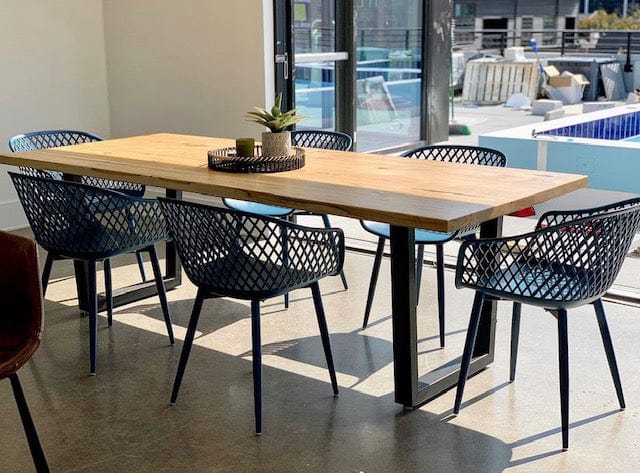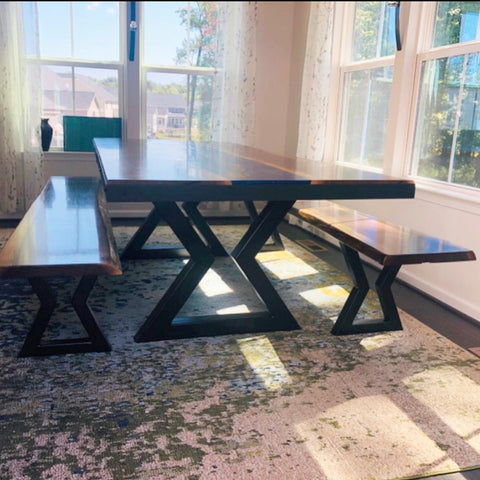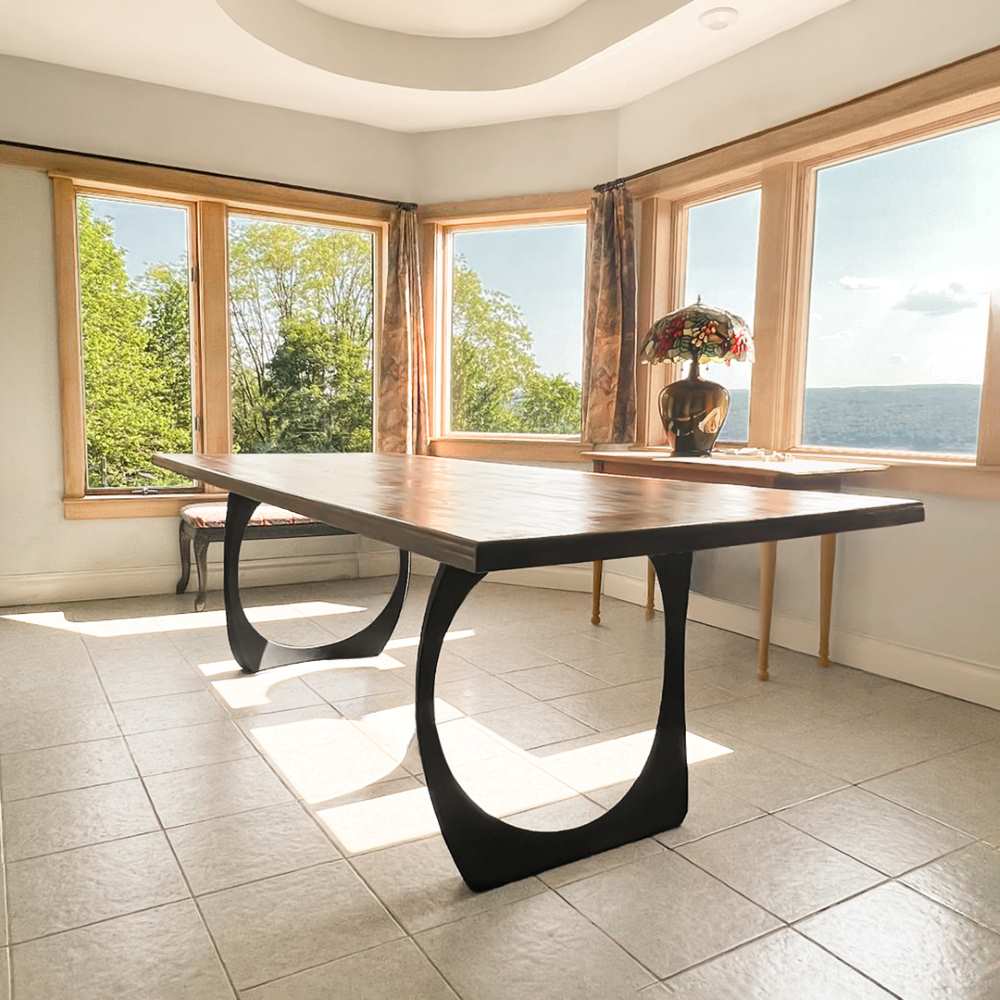How to Choose the Perfect Eating Room Table Legs for Your Home Décor
Choosing the optimal dining area table legs is a nuanced procedure that requires mindful consideration of numerous components, including your area constraints, aesthetic preferences, and useful requirements. The interplay in between styles, products, and dimensions can significantly affect the setting of your dining area, making it important to approach this decision carefully. As you consider the myriad choices available, it ends up being clear that the best option prolongs past simple look; it can boost your overall dining experience. What elements should you prioritize to guarantee your choice complements your home's special personality?
Assess Your Eating Area
Assessing your eating room is crucial for picking the right table legs that match both visual appeals and performance. Begin by gauging the measurements of your eating location, including ceiling elevation, floor space, and closeness to other furniture. This info will certainly assist determine the ideal size and height of your dining table, which directly affects the selection of table legs.
Following, think about the style and design of your eating area. As an example, an open-concept style may benefit from table legs that provide aesthetic agility, such as slim metal or acrylic options. On the other hand, a more traditional setup could require durable wooden legs that provide a feeling of permanence.
Review the existing color scheme and materials in your eating area. Balancing the table legs with these aspects develops a natural look that enhances the overall decor. In addition, think regarding the capability needed in your room. If you often hold huge celebrations, think about legs that supply extra assistance and security.
Eventually, a thorough assessment of your eating area will certainly lead you in making an educated choice, making certain that your table legs not just enhance the aesthetic appeal but also serve practical functions.
Consider Your Design Preferences
When selecting dining-room table legs, it is vital to review your individual style choices, as they dramatically affect the total visual of your dining area. Your option of table legs can either complement or comparison with existing décor, making it critical to straighten them with your preferred interior decoration theme.
If your home leans in the direction of a modern aesthetic, take into consideration streamlined metal or minimal wood legs that give a clean, uncluttered look. For a more traditional approach, luxuriant wooden legs with detailed carvings can add a touch of sophistication and class. Industrial designs gain from robust, resources such as recovered timber and metal mixes, reflecting a sturdy charm.
In addition, farmhouse and rustic styles usually prefer durable, beefy legs that stimulate a sense of heat and comfort. On the other hand, if your décor is diverse, you might pick non-traditional forms or a mix of products to produce visual rate of interest.

Evaluate Material Options
The choice of material for eating space table legs plays a crucial function in both longevity and visual charm. Typical materials include timber, steel, and composite options, each offering unique attributes that can influence the general look and durability of your table.
Timber is a classic choice, understood for its warmth and flexibility. this Hardwoods like oak and walnut offer extraordinary stamina and can be finished in various stains to match any type of design. Nevertheless, softwoods like yearn are much more prone to damages and scrapes, making them less suitable for high-traffic locations.
Steel legs, typically crafted from steel or aluminum, exude modernity and commercial charm. They are highly sturdy and resistant to wear, making them suitable for families with children or constant gatherings (dining room table legs). In addition, metal can be ended up in various colors, improving the personalization possibilities
Composite materials, such as MDF or laminate, deal affordability and diverse layouts. While normally less sturdy than solid wood or metal, they can still supply a trendy appearance and are usually very easy to preserve.
Ultimately, the material you choose must straighten with your way of living, aesthetic preferences, and the degree of usage your dining table will certainly experience.
Determine Height and Size
Choosing the appropriate elevation and dimension for your dining room table is crucial for both performance and comfort. The common height for dining tables usually varies from 28 to 30 inches, enabling enough legroom for many individuals when seated. It is crucial to think about the measurements of your eating room and the types of chairs you intend to utilize.

Additionally, think about the proportions of your dining space. A larger table in a large area can create a grand ambiance, while a smaller table works well in even more intimate setups. Eventually, the ideal elevation and dimension will certainly balance with your general style and boost the dining experience for you and your guests.
Explore Customization Possibilities

In addition, the style of the legs can be personalized to fit various designs, such as rustic, contemporary, or industrial. As an example, conical legs can evoke a mid-century modern-day feel, while beefy, block-style legs may reverberate with conventional or farmhouse style.
Home owners can also check out color finishes, from all-natural timber spots to paint, allowing them to match or contrast with the table top and surrounding decoration.
Moreover, leg height can be gotten used to fit specific seating setups or personal choices, enhancing both comfort and performance.
Last but not least, special embellishments, such as carvings or ornamental braces, can even more individualize the table legs, making the dining experience not just a meal yet a declaration piece in the home. By taking into consideration these personalization alternatives, homeowners can produce an eating room table that genuinely mirrors their individuality.
Final Thought
Picking the optimal dining-room table legs needs mindful consideration of various variables, consisting of the measurements of the eating area, style choices, material sturdiness, and preferred height. Personalization options better enhance the capability to achieve a cohesive aesthetic that Homepage complements the total style. By methodically evaluating these aspects, house owners can make sure that the picked table legs not just accomplish useful demands yet additionally add favorably to the eating experience and ambiance of the home.
Choosing the perfect eating space table legs is a nuanced process that calls for cautious factor to consider of different elements, including your area restraints, visual preferences, and sensible requirements.Examining your dining area is vital for picking the right table legs that match both aesthetic appeals and capability.When determining size, measure the area where the table will certainly be put to guarantee it fits conveniently, allowing for at least 36 inches of clearance around the table for easy movement. article A bigger table in a large area can produce a grand atmosphere, while a smaller table works well in even more intimate settings.Picking the ideal dining room table legs calls for careful consideration of various factors, consisting of the dimensions of the dining area, style choices, material sturdiness, and wanted height.